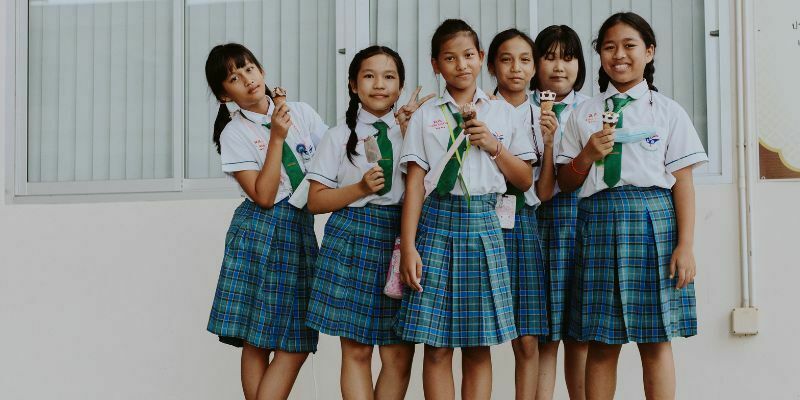
Newspaper headlines have often been screaming ‘Girls outnumber boys’. While student performance is not gender-based or biased, it is encouraging to see girls engage well and excel in healthy competition. This is the result of concerted efforts to uplift and advance girls. Today, the time has come to focus on rural girls if we need to see a renaissance in our society.
The International Day of the Girl (IDG), which has been observed for more than a decade, is one of those key steps. In 2011, the United Nations General Assembly (UNGA) declared October 11 as the day to recognize the rights of girls, the unique challenges they face around the world, and how to address these issues. The UN declared that girls have the right to a safe, educated, and healthy life, not only during the critical formative years but also as they mature into women. The agency also recognized that, if effectively supported during the adolescent years, girls have the potential to change the world by being empowered workers, mothers, entrepreneurs, mentors, heads of households, and political leaders.
In terms of getting people to read and write, India has come a long way since it became independent. The country’s average literacy rate stood at 77.70%, with males literate at 84.70% and females literate at 70.30%, according to the National Family Health Survey (NFHS-5) and the National Bureau of Statistics: NSO (2021 and 2022). While there is still a long way to go in terms of achieving gender parity and improving overall figures, the efforts made by the government and the education sector as a whole are slowly bearing fruit.
Make every school in India a haven for girls
Recognizing the importance of gender parity in education enrollment and completion to create an equitable nation, the government established the National Education Policy 2020 (NEP 2020). The policy provides for education for all children, with particular attention to girls and those from economically disadvantaged backgrounds. This aspect could be a game changer for India because it is a fact that the dropout rate for girls remains high after the primary levels and the enrollment rate declines at the secondary and upper secondary levels. One of the reasons cited for this is the lack of toilets which forces girls to drop out of school at the start of menstruation.
To illustrate this, let’s look at the role of a school in a child’s life. School is a second home for girls as it helps build their confidence and gives them the courage to carve out an identity for themselves. Schools, as an institution, are the foundation of people, economies, and nations. Therefore, all schools in the country must have certain basic facilities, including clean and equipped classrooms, trained and empathetic teachers, healthy meals, and hygienic bathrooms. The Gender Inclusion Fund (GIF), an integral part of NEP 2020, should be able to address these issues, especially that of safe and hygienic restrooms.
Health and nutrition are very important and need to be looked at. While measures such as midday meal programs are implemented, the government may budget a portion of the GIF exclusively to provide supplementary meals and supplements for girls in order to counter the rampant problem of malnutrition among women. In addition, schools must be the place where children recognize and respect each other regardless of their gender. Gender awareness should be part of the curriculum, as should sex education, menstrual health, and hygiene.
Educating girls to realize their incredible potential.
Indra Nooyi, the former CEO of PepsiCo and one of the most powerful women in the world, said, “I don’t think any economy in the world can succeed in the future without tapping into the incredible potential of women.” I just don’t see how that could happen.” And how true is this?
In many places and cultures, children are still seen as possible breadwinners. One way to change this idea is to give girls opportunities at the same time they are growing up. In fact, the best way to take advantage of women’s huge potential is to make sure they learn the right skills in school so they are ready to enter the workforce.
One progressive way forward is to introduce mandatory skills upgrading and vocational training courses as part of the regular school curriculum so that girls, regardless of their economic background, are equally equipped to enter the country’s workforce.
One area that all countries need to focus on is the right of all girls to legal literacy. This will go a long way in securing their future and empowering them to tap into their incredible potential.
Focus on the inclusion and empowerment of girls.
One of India’s defining steps towards inclusion and empowerment has been the Beti Bachao Beti Padhao wellness program. This scheme ensures that all girls are protected with inclusive benefits, including access to quality education and the right to inherit their family’s property. Complemented by programs such as Balika Samriddhi Yojana Y Sukanya Samriddhi Yojanathese schemes are attempts to first break the stigma surrounding the birth of a girl, and then provide them with opportunities to become contributing members of society and the economy.
India is a key player in the United Nations 2030 Agenda for Sustainable Development and the 17 Sustainable Development Goals (SDGs), both as a formulator and driver. Gender equality and the empowerment of women are integral parts of each of these goals. Promoting gender equality and ending all forms of discrimination against women and girls is critical to accelerating sustainable development. Only by protecting the rights of girls and women can nations ensure the safety and livelihood of future generations.







